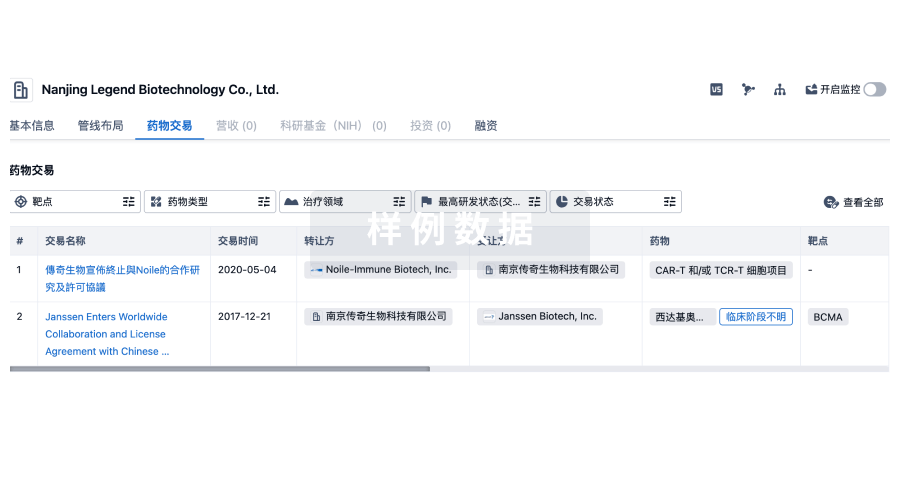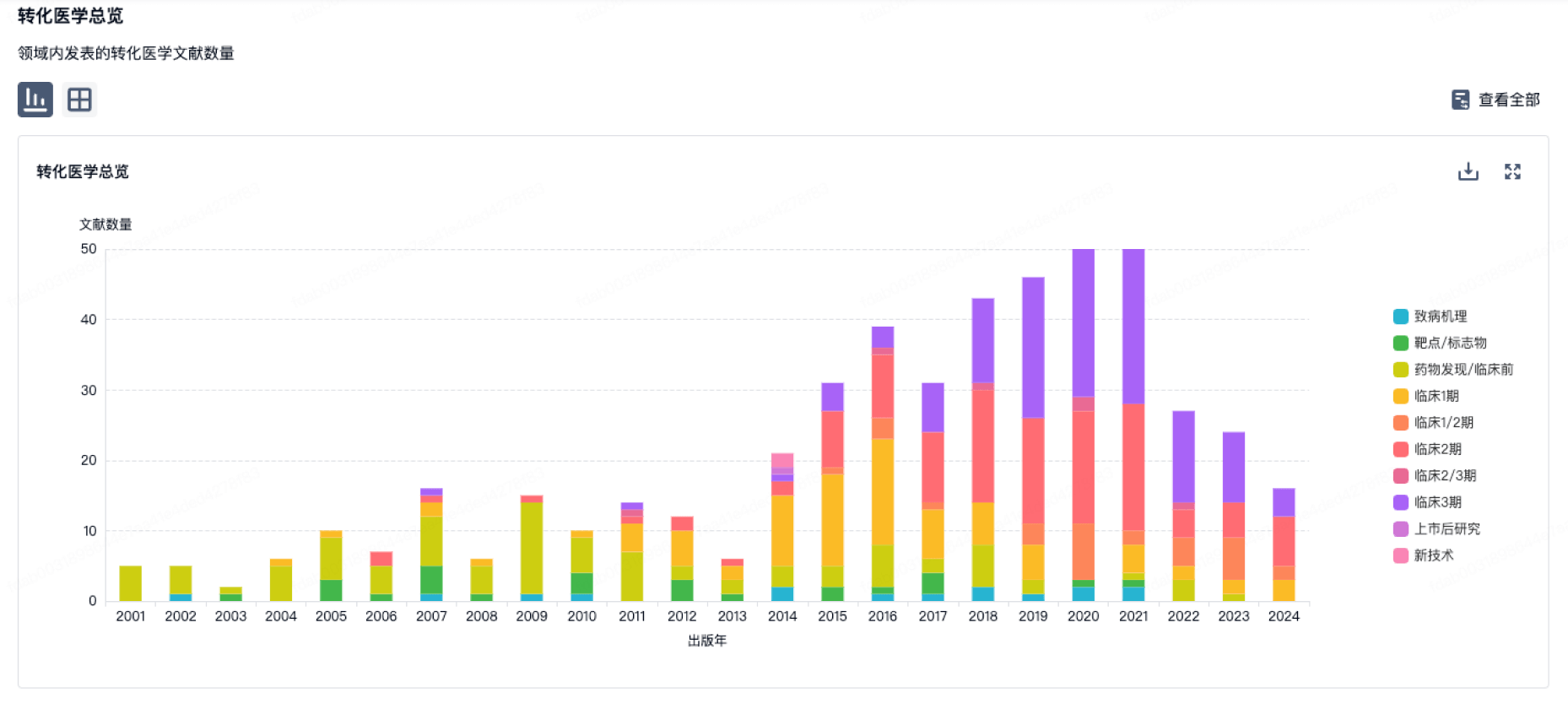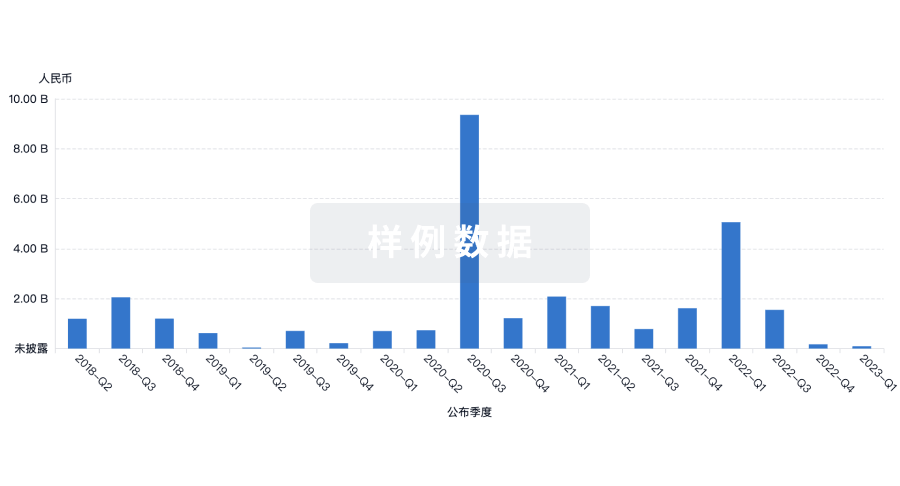预约演示
更新于:2025-10-30

Siemens AG
更新于:2025-10-30
概览
关联
213
项与 Siemens AG 相关的临床试验NCT07221058
Adaptive Radiation BOost for Rectal Cancer: a Phase I Dose Escalation Study (ARBOR)
The goal of this clinical trial is to find out if giving extra adaptive radiation therapy after standard chemoradiation treatment is safe and helpful for people with rectal cancer.
The main questions the study aims to answer are:
* Can this approach help target the most aggressive cancer cells more accurately, while protecting nearby healthy tissue?
* Can it reduce the side effects that people may experience during treatment?
Participants will:
* First receive standard treatment: radiation (45 Gy in 25 sessions) along with a chemotherapy pill called capecitabine.
* Then get extra radiation using MRI scans every two weeks to adjust the treatment based on how the tumor responds.
* Use a small balloon during treatment to help aim the radiation and protect healthy areas.
* Finally, receive additional chemotherapy (such as FOLFOX) for four months.
The main questions the study aims to answer are:
* Can this approach help target the most aggressive cancer cells more accurately, while protecting nearby healthy tissue?
* Can it reduce the side effects that people may experience during treatment?
Participants will:
* First receive standard treatment: radiation (45 Gy in 25 sessions) along with a chemotherapy pill called capecitabine.
* Then get extra radiation using MRI scans every two weeks to adjust the treatment based on how the tumor responds.
* Use a small balloon during treatment to help aim the radiation and protect healthy areas.
* Finally, receive additional chemotherapy (such as FOLFOX) for four months.
开始日期2025-10-30 |
申办/合作机构 |
NCT06995053
Image-Guidance With Triggered Beam Hold To Implanted Fiducial Markers or Hypersight for Stereotactic Body Radiotherapy for Prostate Cancer (ILLUSION)
This clinical trial studies the side effects of computed tomography (CT)-guided stereotactic body radiation therapy (SBRT) with intrafraction motion monitoring and to see how well it works in treating patients with prostate cancer that has not spread to other parts of the body (localized). In CT-guided SBRT, x-ray-based imaging and cone-beam CTs are used to define and localize the area to be treated with SBRT. SBRT is a type of external radiation therapy that uses special equipment to position a patient and precisely deliver radiation to tumors in the body (except the brain). The total dose of radiation is divided into smaller doses given over several days. This type of radiation therapy helps spare normal tissue. A recent randomized trial showed that while SBRT is associated with less urinary incontinence and erectile dysfunction than complete surgical removal of the prostate, there are more urinary irritative side effects and more bowel side effects than with surgery. One source of uncertainty in SBRT that may contribute to genitourinary (GU) and gastrointestinal (GI) side effects is the necessity of treating a "margin" of volume around the prostate to account for its movement during SBRT. Intrafraction motion monitoring is any technique or system designed to track the movement of the body and target during fractions of external beam radiation to keep the beam on target. This allows for the patient to be repositioned, if needed, to ensure delivery of the SBRT to only the planned treatment area. CT-guided SBRT with intrafraction motion monitoring may lower GU and GI side effects by allowing tighter margins, as has been demonstrated with magnetic resonance imaging (MRI)-guided SBRT.
开始日期2025-09-01 |
申办/合作机构 |
NCT07175077
7T Brain MRI Scan for Micro-brain Metastasis (microBM) Detection for Patients With Small-cell Lung Cancer (SCLC), Who Decline Prophylactic Cranial Irradiation (PCI)
Comparison of a 7t MRI to standard of care 1.5t/3t MRI scans to determine if earlier detection of brain metastases are possible on a 7t.
开始日期2025-09-01 |
申办/合作机构 |
100 项与 Siemens AG 相关的临床结果
登录后查看更多信息
0 项与 Siemens AG 相关的专利(医药)
登录后查看更多信息
10,175
项与 Siemens AG 相关的文献(医药)2026-03-01·Journal of Stomatology Oral and Maxillofacial Surgery
Comparative evaluation of photon-counting detector CT and cone-beam CT in the assessment of simulated mandibular trauma
Article
作者: Sandhu, Sameena ; Mergen, Victor ; Flohr, Thomas ; Burian, Egon ; Essig, Harald ; Kessler, Peter ; Alkadhi, Hatem ; Demmert, Tristan T ; Stadlinger, Bernd ; Al-Haj Husain, Adib ; Wagner, Maximilian Eberhard Hermann
INTRODUCTION:
This ex vivo study aimed to compare photon-counting detector computed tomography (PCD-CT) and cone-beam computed tomography (CBCT) at matched standard- and low-dose radiation levels for evaluating perioperative imaging parameters relevant to mandibular fracture stabilization with osteosynthesis plates.
MATERIAL AND METHODS:
Thirty-three osteosynthesis fixations were performed on six porcine mandibles with simulated fractures in the angle, body, and parasymphysis regions. Three types of plate systems (titanium microplates, titanium reconstruction plates, and bioresorbable copolymers) were used, each with varying plate thicknesses. Three blinded observers independently evaluated overall image quality, artifact severity, fracture line visibility, and visualization of peri‑osteosynthesis structures using 5-point visual analog scales. Descriptive statistics and inter-reader agreement (Krippendorff's alpha) were calculated.
RESULTS:
PCD-CT consistently demonstrated superior overall image quality, reduced artifact severity, and better visualization of fracture lines and peri‑osteosynthetic structures compared to CBCT, particularly using low-dose settings. Bioresorbable plates caused no artifacts in either modality. Inter-observer agreement was good to excellent across all parameters (Krippendorff's α = 0.72-1.0).
CONCLUSION:
PCD-CT outperformed CBCT in visualizing mandibular fracture stabilization with various osteosynthesis materials, particularly under low-dose conditions, demonstrating high reliability among observers. These findings indicate that PCD-CT may offer diagnostic advantages in the perioperative setting; however, further clinical studies are needed to confirm its role in imaging oral and maxillofacial trauma.
2026-01-01·Clinical and Translational Radiation Oncology
First-in-human e-Flash radiotherapy using a modified conventional C-arm linear accelerator
Article
作者: Ramelyte, Egle ; Smith, Wendy ; Guckenberger, Matthias ; Psoroulas, Serena ; Mangana, Joanna ; von der Grün, Jens ; Vilalta, Marta ; Tanadini-Lang, Stephanie ; Dal Bello, Riccardo ; Tirpak, Lena ; Krayenbuehl, Jerome ; Fesslmeier, Debra ; Sharma, Ricky A ; Balermpas, Panagiotis
Background:
The FLASH effect is considered being the widening of the therapeutic window at (ultra-)high dose rates due to sparing of normal tissues while preserving tumor response. Our goal was to provide first data on the safety in treating a patient using a conventional linear accelerator converted to deliver 9 MeV UHDR electron beams in the research setting.
Material & methods:
A conventional Varian TrueBeam linac was converted in the research setting to become capable of delivering 9 MeV UHDR electron beams. A phase I trial protocol was approved by the local authorities (NCT06549439). One patient with ≥ 1 melanoma (sub)-cutaneous lesion(s) was treated with 3x 9 Gy. The first two fractions were applied via e-Flash and the third via conventional electrons.
Results:
Here we present the experience of the first patient treated with e-Flash in a modified conventional linac. The e-Flash fractions were successfully delivered according to the protocol. The film in-vivo dosimetry confirmed correctness of the delivered dose. A good tumor response without severe or unexpected toxicity was observed up to six weeks after treatment.
Conclusion:
We demonstrate first-in-human application of e-Flash delivered by a modified conventional linear accelerator. Conversion of conventional linacs into e-Flash systems will accelerate testing Flash radiotherapy in clinical trials.
2026-01-01·CLINICA CHIMICA ACTA
Demonstrating commutability of an existing certified reference material for use with an end-user measurement procedure that was not included in the original commutability assessment
Article
作者: Panteghini, Mauro ; Miller, W Greg ; Fauskanger, Pernille Kjeilen ; Lyle, Alicia N ; Rej, Robert ; Deprez, Liesbet ; Budd, Jeffrey ; Weykamp, Cas ; Sandberg, Sverre ; Keller, Thomas ; Barczak, Elizabeth ; Delatour, Vincent ; Johansen, Jesper V ; MacKenzie, Finlay ; Greenberg, Neil ; Camara, Johanna E
Commutability assessment of a certified reference material (CRM) intended for use as a secondary calibrator should be performed by the CRM producer at the time the material is originally prepared. Assessment typically includes several in-vitro diagnostic (IVD) measurement procedures (MPs) in common use in medical laboratories. Due to logistical constraints, it is usually not possible to include all existing IVD-MPs in a commutability assessment. In addition, a new IVD-MP (IVD-MPn) may be introduced into the market after a commutability assessment was performed for a given CRM. Here we provide a recommendation how to assess commutability of an existing CRM for use with an IVD-MPn that was not included in the original commutability assessment. The study design follows the same principles as a full commutability assessment, but it includes only the IVD-MPn and fewer additional comparator MP(s) for which the CRM's commutability with clinical samples was previously demonstrated. When no reference measurement procedure (RMP) is available, or when the logistics make an RMP difficult to use, other IVD-MP(s) that were part of the original commutability assessment for the CRM should be used as comparator MP(s). When selecting a comparator IVD-MP, its performance must be carefully considered and its selectivity for the measurand should be equivalent to that of the IVD-MPn. The CRM should have had negligible noncommutability bias with the comparator IVD-MP in the original commutability assessment. When the existing CRM meets the commutability criterion for IVD-MPn, the CRM can be used in the calibration hierarchy of the IVD-MPn.
1,353
项与 Siemens AG 相关的新闻(医药)2025-10-29
2022年11月1日起,行政相对人可登录国家药品监督管理局政务服务门户的法人空间查看电子证照,按照相关提示自行打印。序号受理号产品名称申请人代理人注册证编号批准日期1CQZ2400733基因测序仪杭州贝瑞和康基因诊断技术有限公司/国械注准202532220852025-10-272CQZ2400756半导体激光治疗仪武汉戴美激光科技有限公司/国械注准202530121002025-10-273CQZ2400847超声诊断设备万东百胜(苏州)医疗科技有限公司/国械注准202530621172025-10-274CQZ2400879微波消融仪邦士医疗科技股份有限公司/国械注准202530121142025-10-275CQZ2400895半导体激光脱毛机潍坊明亮电子有限公司/国械注准202530921092025-10-276CQZ2400920一次性使用有创压力传感器河北康誉医疗器械有限公司/国械注准202530720912025-10-277CQZ2400984内窥镜用超声诊断设备声索生物科技(上海)有限公司/国械注准202530621152025-10-278CQZ2400999眼科OCT图像辅助诊断软件苏州比格威医疗科技有限公司/国械注准202532121072025-10-279CQZ2401133一次性使用激光光纤套件杭州佳量医疗科技有限公司/国械注准202530120822025-10-2710CQZ2401136立体定向手术计划软件杭州佳量医疗科技有限公司/国械注准202532120832025-10-2711CQZ2401139磁共振监测半导体激光治疗设备杭州佳量医疗科技有限公司/国械注准202530120812025-10-2712CQZ2401189半自动体外除颤器薪火医疗设备(重庆)有限公司/国械注准202530820862025-10-2713CQZ2401194自动体外除颤器薪火医疗设备(重庆)有限公司/国械注准202530820872025-10-2714CQZ2401417一次性使用静脉腔内射频闭合导管安徽颖特微络医疗科技有限公司/国械注准202530121182025-10-2715CQZ2401441多叶准直器江苏海明医疗器械有限公司/国械注准202530521212025-10-2716CQZ2401538静脉腔内射频闭合发生器安徽颖特微络医疗科技有限公司/国械注准202530121412025-10-2717CQZ2401629一次性使用血管内超声诊断导管西安华峰医疗科技有限公司/国械注准202530621022025-10-2718CQZ2401635血管内超声诊断设备西安华峰医疗科技有限公司/国械注准202530621162025-10-2719CQZ2401648心肺复苏除颤仪深圳市安保医疗科技股份有限公司/国械注准202530820992025-10-2720CQZ2401683静脉腔内射频闭合发生器绵阳立德电子股份有限公司/国械注准202530121302025-10-2721CQZ2401711一次性使用超声软组织手术刀头天津越安医疗科技有限公司/国械注准202530121422025-10-2722CQZ2401730一次性使用静脉腔内射频闭合导管绵阳立德电子股份有限公司/国械注准202530121352025-10-2723CQZ2401773高频手术设备南京艾力芬医疗器械有限公司/国械注准202530121122025-10-2724CQZ2401786超声软组织手术设备常州市康迪医用吻合器有限公司/国械注准202530121382025-10-2725CQZ2401853微波消融仪江苏昕晨医疗科技有限公司/国械注准202530121132025-10-2726CQZ2401873高频手术设备北京索吉瑞科技有限公司/国械注准202530120922025-10-2727CQZ2401927一次性使用静脉腔内射频闭合导管晟景(山东)医疗科技有限公司/国械注准202530121312025-10-2728CQZ2401980射频皮肤治疗仪深圳半岛医疗集团股份有限公司/国械注准202530921042025-10-2729CQZ2401991全自动核酸检测分析仪西安天隆科技有限公司/国械注准202532221012025-10-2730CQZ2401992超声高频外科集成手术设备上海逸思医疗科技股份有限公司/国械注准202530121392025-10-2731CQZ2402038可充电植入式脑深部神经刺激器乐普医学电子仪器股份有限公司/国械注准202531221482025-10-2732CQZ2402045植入式脑深部神经刺激电极组件乐普医学电子仪器股份有限公司/国械注准202531221502025-10-2733CQZ2402111医用磁共振成像系统飞利浦医疗(苏州)有限公司/国械注准202530620962025-10-2734CQZ2402188植入式脑深部神经刺激延伸导线套件乐普医学电子仪器股份有限公司/国械注准202531221522025-10-2735CQZ2402249医用电子直线加速器医科达(北京)医疗器械有限公司/国械注准202530521552025-10-2736CQZ2402265移动式头颈磁共振成像系统中科微影(泰州)医疗科技有限公司/国械注准202530621592025-10-2737CQZ2402288麻醉机天津易世恒医疗科技有限公司/国械注准202530820842025-10-2738CQZ2402299超声骨组织手术设备武汉联影智融医疗科技有限公司/国械注准202530121462025-10-2739CQZ2402309外周血管血栓旋切动力设备西安英特文医疗器械有限公司/国械注准202530120902025-10-2740CQZ2402337一次性使用微波消融针南京瑞波医学科技有限公司/国械注准202530121372025-10-2741CQZ2402345儿童手部X射线图像骨龄辅助评估软件上海联影智能医疗科技有限公司/国械注准202532121492025-10-2742CQZ2402354一次性使用电动腔镜直线型切割吻合器和钉仓武汉迈瑞生物医疗科技有限公司/国械注准202530120952025-10-2743CQZ2402383一次性使用电动直线型切割吻合器及钉仓组件江苏博朗森思医疗器械有限公司/国械注准202530121432025-10-2744CQZ2402389血管内超声诊断设备深圳开立生物医疗科技股份有限公司/国械注准202530621112025-10-2745CQZ2402399全自动核酸检测分析仪广州达安基因股份有限公司/国械注准202532221222025-10-2746CQZ2500056X射线计算机体层摄影设备佳能医疗器械(大连)有限公司/国械注准202530621542025-10-2747CQZ2500062肝脏局灶性病变CT图像辅助分诊软件上海联影智能医疗科技有限公司/国械注准202532120942025-10-2748CQZ2500064磁共振成像系统苏州朗润医疗系统有限公司/国械注准202530621052025-10-2749CQZ2500076一次性使用双极高频超声双输出软组织手术器械武汉半边天微创医疗技术有限公司/国械注准202530121332025-10-2750CQZ2500085一次性使用神经刺激探头南京科泰柯林医疗科技有限公司/国械注准202530721532025-10-2751CQZ2500100磁共振成像系统安徽福晴医疗装备有限公司/国械注准202530621102025-10-2752CQZ2500127脑外科和脊柱外科手术导航定位系统北京柏惠维康科技股份有限公司/国械注准202530121512025-10-2753CQZ2500129一次性使用超声软组织手术刀头湖南贝恩外科器械有限公司/国械注准202530121342025-10-2754CQZ2500295胸腹腔内窥镜手术系统北京精锋医疗装备有限公司/国械注准202530121082025-10-2755CQZ2500364除颤监护仪普美康(江苏)医疗科技有限公司/国械注准202530821452025-10-2756CQZ2500376呼吸机深圳市普博医疗科技股份有限公司/国械注准202530821572025-10-2757CQZ2500388一次性使用超声软组织手术刀头武汉联影智融医疗科技有限公司/国械注准202530121362025-10-2758CQZ2500413骨科手术导航定位系统骨圣元化机器人(深圳)有限公司/国械注准202530121442025-10-2759CQZ2500431血液透析设备江苏费森尤斯医药用品有限公司/国械注准202531021562025-10-2760CQZ2500519一次性使用磁定位星型标测导管四川锦江电子医疗器械科技股份有限公司/国械注准202530721322025-10-2761CQZ2500534全自动核酸恒温扩增分析仪武汉中帜生物科技股份有限公司/国械注准202532221632025-10-2762CQZ2500758呼吸机深圳市普博医疗科技股份有限公司/国械注准202530821472025-10-2763CSZ2400141人ZNF154基因甲基化检测试剂盒(荧光PCR法)安徽达健医学科技有限公司/国械注准202534021232025-10-2764CSZ2400145肺炎克雷伯菌及3种(NDM、KPC和OXA-48)碳青霉烯耐药基因检测试剂盒(荧光PCR法)宁波基内生物技术有限公司/国械注准202534021192025-10-2765CSZ2400207梅毒螺旋体抗体检测试剂(胶体金法)杭州博拓生物科技股份有限公司/国械注准202534021402025-10-2766CSZ2400209甲型流感病毒抗原检测试剂盒(胶体金法)北京金沃夫生物工程科技有限公司/国械注准202534021202025-10-2767CSZ2400217抗人球蛋白(抗IgG+C3d)检测试剂(试管法)江苏中济万泰生物医药有限公司/国械注准202534021252025-10-2768CSZ2400219甲型/乙型流感病毒抗原检测试剂盒(胶体金法)郑州安图生物工程股份有限公司/国械注准202534021262025-10-2769CSZ2400227梅毒螺旋体抗体、人类免疫缺陷病毒抗体联合检测试剂(胶体金法)杭州博拓生物科技股份有限公司/国械注准202534021292025-10-2770CSZ2400247腺病毒抗原检测试剂盒(胶体金法)郑州安图生物工程股份有限公司/国械注准202534020882025-10-2771CSZ2400248呼吸道合胞病毒抗原检测试剂盒(胶体金法)郑州安图生物工程股份有限公司/国械注准202534020892025-10-2772CSZ2400300人ALDH2基因分型检测试剂盒(荧光-PCR法)杭州百迈生物股份有限公司/国械注准202534021642025-10-2773CSZ2400316单纯疱疹病毒1+2分型核酸检测试剂盒(PCR-荧光探针法)郑州安图生物工程股份有限公司/国械注准202534021622025-10-2774CSZ2400374新型冠状病毒2019-nCoV核酸检测试剂盒(荧光PCR法)上海之江生物科技股份有限公司/国械注准202534021662025-10-2775CSZ2400382甲型流感病毒、乙型流感病毒、新型冠状病毒(2019-nCoV)抗原检测试剂盒(乳胶法)英诺特(唐山)生物技术有限公司/国械注准202534020972025-10-2776CSZ2400403丙型肝炎病毒抗体检测试剂盒(化学发光免疫分析法)广州万孚生物技术股份有限公司/国械注准202534021612025-10-2777CSZ2400405乙型肝炎病毒核心抗体测定试剂盒(化学发光免疫分析法)广州万孚生物技术股份有限公司/国械注准202534021032025-10-2778CSZ2400532呼吸道合胞病毒抗原对照品郑州安图生物工程股份有限公司/国械注准202534021602025-10-2779CSZ2400543甲型流感病毒、乙型流感病毒、肺炎支原体核酸检测试剂盒(荧光PCR法)圣湘生物科技股份有限公司/国械注准202534021652025-10-2780CSZ2400547甲型流感病毒、乙型流感病毒、腺病毒核酸检测试剂盒(荧光PCR法)圣湘生物科技股份有限公司/国械注准202534020982025-10-2781CSZ2400554甲型流感病毒抗原对照品郑州安图生物工程股份有限公司/国械注准202534021682025-10-2782CSZ2500020人鼻病毒、腺病毒、肺炎支原体核酸检测试剂盒(荧光PCR法)圣湘生物科技股份有限公司/国械注准202534021672025-10-2783CSZ2500029CD20抗体试剂(免疫组织化学法)河南赛诺特生物技术有限公司/国械注准202534021582025-10-2784CSZ2500046游离前列腺特异性抗原(fPSA)测定试剂盒 (免疫荧光层析法)深圳市迈科龙生物技术有限公司/国械注准202534021242025-10-2785CSZ2500052呼吸道合胞病毒核酸检测试剂盒(荧光PCR法)圣湘生物科技股份有限公司/国械注准202534021272025-10-2786CSZ2500120呼吸道合胞病毒抗原检测试剂盒(胶体金法)天津博奥赛斯生物科技股份有限公司/国械注准202534020932025-10-2787CSZ2500145凝血复合校准品迈克生物股份有限公司/国械注准202534021282025-10-2788CSZ2500149凝血复合质控血浆迈克生物股份有限公司/国械注准202534021062025-10-2789JQZ2400242一次性使用心腔内超声导管Siemens Medical Solutions USA, Inc.西门子医疗系统有限公司国械注进202530604832025-10-2790JQZ2400288磁共振图像处理与分析软件Siemens Healthcare GmbH西门子医疗系统有限公司国械注进202532104822025-10-2791JQZ2400331血液透析设备株式会社ジェイ・エム・エス新桥通科技(大连)有限公司国械注进202531004842025-10-2792JQZ2400339植入式心律转复除颤器Medtronic, Inc.美敦力(上海)管理有限公司国械注进202531204852025-10-2793JQZ2400349植入式心脏再同步治疗心律转复除颤器Medtronic, Inc.美敦力(上海)管理有限公司国械注进202531204862025-10-27
申请上市临床1期临床申请
2025-10-28
依据国家药品监督管理局《创新医疗器械特别审查程序》(国家药监局2018年第83号公告),创新医疗器械审查办公室组织有关专家对创新医疗器械特别审查申请进行审查,拟同意以下申请项目进入特别审查程序,现予以公示。公示时间为2025年10月29日至11月12日。
1.产品名称:自膨式颅内药物洗脱支架系统
申 请 人:利兰生物科技(苏州)有限公司
2.产品名称:植入式无线脑机接口系统
申 请 人:上海阶梯医疗科技有限公司
3.产品名称:X射线计算机体层摄影设备
申 请 人:上海西门子医疗器械有限公司
4.产品名称:关节软骨再生支架
申 请 人:浙江星月生物科技股份有限公司
5.产品名称:胶原半月板植入物
申 请 人:北京邦塞科技有限公司
6.产品名称:甲状腺球蛋白(TG)基因(mRNA)检测试剂盒(荧光PCR法)
申 请 人:上海睿璟生物科技有限公司
7.产品名称:巩膜外顶压球囊
申 请 人:广州卫视博生物科技有限公司
公示期内,任何单位和个人如有异议,可书面提交异议意见,发送至我中心电子邮箱:gcdivision@cmde.org.cn。
特别说明:
进入创新审查程序不代表已认定产品具备可获准注册的安全有效性,申请人仍需按照有关要求开展研发及提出注册申请,药品监督管理部门及相关技术机构将按照早期介入、专人负责、科学审查的原则,在标准不降低、程序不减少的前提下进行审评审批。
国家药品监督管理局
医疗器械技术审评中心
2025年10月29日
诊断试剂信使RNA疫苗
2025-10-27
·格隆汇
根据QYResearch报告出版商调研统计,2031年全球生物标志物分析市场销售额预计将达到597.6亿元,年复合增长率(CAGR)为11.0%(2025-2031)。中国市场在过去几年变化较快,2024年市场规模为 亿元,约占全球的 %,预计2031年将达到 亿元,届时全球占比将达到 %。全球生物标志物分析市场是指分析和测量生物标志物的市场,生物标志物是可以客观可靠地测量的生物指标,用于评估正常和病理过程、生物对治疗的反应或药理反应。生物标志物分析在医学研究、诊断、药物发现和个性化医疗等多个领域发挥着至关重要的作用。 以下是影响全球生物标记分析市场增长的一些关键因素: 慢性病发病率不断上升: 癌症、心血管疾病和神经系统疾病等慢性疾病是全球医疗系统的沉重负担。生物标记分析在这些疾病的早期检测、诊断和监测中发挥着至关重要的作用。慢性疾病发病率的不断上升推动了对生物标记分析工具和技术的需求。 基因组学和蛋白质组学的进步: 近年来,基因组学和蛋白质组学领域取得了长足进步,能够识别和分析各种生物标志物。下一代测序(NGS)、质谱分析、微阵列技术和其他高通量技术为生物标志物分析带来了革命性的变化。越来越多地采用这些先进技术推动了生物标记物分析市场的增长。 个性化医疗和辅助诊断: 生物标志物分析是个性化医疗不可或缺的一部分,个性化医疗包括根据个人的基因构成、生活方式和特定生物标志物量身定制医疗方案。生物标志物可用于患者分层、治疗选择和治疗反应监测。对个性化医疗的日益关注以及伴随诊断的发展,推动了对生物标志物分析工具和服务的需求。 药物发现与开发: 生物标志物分析在药物发现和开发过程中至关重要。生物标志物用于确定潜在的药物靶点、评估药物疗效和安全性以及预测患者对治疗的反应。制药公司、研究机构和合同研究组织 (CRO) 利用生物标记分析来指导新药和疗法的开发。对药物发现和开发活动的投资不断增加,推动了对生物标记分析技术的需求。 技术进步和自动化: 近年来,生物标记分析领域取得了重大技术进步。自动化平台、高通量筛选系统和分析仪器使生物标记分析变得更加高效、准确和可重复。这些技术进步改善了生物标记分析实验室的工作流程,缩短了周转时间,从而推动了市场的增长。 全球生物标记物分析市场可根据类型(基因生物标记物、蛋白质生物标记物、代谢组生物标记物、成像生物标记物及其他)、应用(诊断、药物研发、个性化医疗及其他)、终端用户(医院和诊断实验室、制药和生物技术公司、研究机构和 CRO)以及地域(北美、欧洲、亚太地区、拉丁美洲以及中东和非洲)进行细分。 总之,全球生物标志物分析市场的驱动力主要来自慢性疾病发病率的上升、基因组学和蛋白质组学的进步、个性化医疗方法、药物发现和开发工作以及生物标志物分析技术的进步。随着生物标记分析在医学研究、诊断和药物开发中继续发挥关键作用,使个性化和有针对性的医疗保健方法成为可能,该市场有望实现大幅增长。当下市场发展现状风云变幻,美国最新关税搅动全球供应链,生物标志物分析行业未来发展前景趋势迷雾重重。QYResearch市场调研出版社重磅发布《2025年全球生物标志物分析行业总体规模、主要企业国内外市场占有率及排名》。报告聚焦全球生物标志物分析总体规模,深度剖析主要厂商占有率和排名,以业务收入、市场份额等关键指标为抓手,精准呈现近三年主要厂商市场销售实况。地区维度上,不仅复盘过去五年主要地区行业规模变迁,更前瞻未来五年发展趋势。助您穿透迷雾,洞悉行业格局,在激烈竞争中抢占先机,把握未来发展黄金脉络!生物标志物分析报告主要研究企业名单:Bio-Rad、Eurofins Scientific、Crown Bioscience、Meridian Bioscience、Thermo Fisher Scientific Inc.、Siemens Healthineers、Roche Molecular Diagnostics、Abbott Laboratories、Agilent/Dako、Becton, Dickinson and Company、Eve Technologies、Fluidic Analytics、Hybrigenics Services、Luminex Corp、Qiagen生物标志物分析报告主要研究产品类型:诊断性生物标志物、预后性生物标志物、预测性生物标志物、安全性生物标志物、代用生物标志物生物标志物分析报告主要研究应用领域:诊断、预后、治疗选择、监测、临床试验本文正文精心规划为 9 章,全方位、深层次地解读全球与中国生物标志物分析市场的发展现状与未来前景趋势,各章节核心内容如下:第一章:市场全景洞察——统计范围、行业归属与规模概览本章聚焦于报告的统计范围界定,精准锚定所属行业,同时对全球及中国生物标志物分析市场的总体规模进行细致梳理。通过详实的数据呈现,让您对市场的宏观框架有清晰认知,把握市场发展的整体态势,为后续深入分析奠定坚实基础。第二章:竞争格局大起底——国内外企业市场占有率与排名揭秘在竞争激烈的市场环境中,企业的市场占有率与排名犹如一面镜子,清晰映照出各企业的实力与地位。本章深入剖析国内外主要企业在生物标志物分析市场的占有率及排名情况,揭示行业竞争格局,助您洞察市场风云变幻,找准自身定位与发展方向。第三章:区域市场深度剖析——全球主要地区市场规模与份额解析不同地区的市场表现往往千差万别,深入了解各地区的市场规模与份额,对于把握市场发展趋势至关重要。本章聚焦全球生物标志物分析主要地区,详细分析各地区的市场规模及份额等关键数据,为您呈现一幅清晰的区域市场地图,助力企业精准布局,开拓市场新蓝海。第四章:产品类型细分市场——全球市场规模与份额精准洞察产品类型的多样化是市场发展的重要特征之一。本章按照产品类型对全球生物标志物分析市场进行细分,深入剖析各细分市场的规模及份额等情况。通过精准的数据分析,帮助您了解不同产品类型的市场需求与发展潜力,为产品研发与市场推广提供有力依据。第五章:应用领域细分市场——全球市场规模与份额深度挖掘应用领域的广泛性决定了市场的广阔前景。本章从应用角度出发,对全球生物标志物分析市场进行细分,详细分析各应用领域的市场规模及份额等关键信息。通过深度挖掘不同应用领域的市场需求特点,为您开拓新的应用场景,提升市场竞争力提供宝贵参考。第六章:企业风采全景展示——全球主要企业基本情况深度剖析企业是市场发展的主体,了解主要企业的基本情况对于把握市场动态至关重要。本章全面介绍全球主要企业的基本情况,涵盖公司简介、生物标志物分析产品特色、收入状况以及最新动态等。通过深入剖析企业的核心竞争力与发展战略,为您洞察行业发展趋势,寻找合作机会提供有力支持。第七章:行业趋势前瞻预判——驱动因素、政策导向与发展趋势深度解读行业的发展离不开内外部因素的共同作用。本章深入分析生物标志物分析行业的发展趋势,剖析驱动行业发展的关键因素,同时解读相关行业政策对市场的影响。通过前瞻性的预判,为您把握行业发展脉搏,提前布局未来市场提供科学指引。第八章:产业链全景透视——上下游分析、生产与销售模式深度解析产业链的协同发展是市场稳定运行的重要保障。本章对生物标志物分析产业链进行全景透视,深入分析上下游产业的关系,剖析生产模式与销售模式的特点及优势。通过全面了解产业链的运作机制,为您优化供应链管理,提升企业运营效率提供有益参考。第九章:报告总结升华——提炼核心观点,指引未来方向本章对前八章的内容进行系统总结与升华,提炼出报告的核心观点与关键结论。通过对市场发展现状的全面梳理与未来前景趋势的精准预判,为您制定发展战略、决策投资方向提供权威参考,助力您在激烈的市场竞争中抢占先机,实现可持续发展。当下市场发展现状瞬息万变,生物标志物分析行业未来发展前景趋势迷雾重重。您是否渴望深度洞察行业,精准把握市场走向?现在,只需点击链接,即可查看完整版(目录+图表),清晰掌握行业架构与数据细节;还能申请报告样本,提前感受基于最新数据与深度行业分析的独到见解。别错过这把握行业脉搏的绝佳契机,立即行动,开启您的行业探索新征程!:https://www.qyresearch.com.cn/reports/5926331/biomarker-analysis生物标志物分析报告目录主要内容展示:1 统计范围及所属行业 1.1 产品定义 1.2 所属行业 1.3 全球市场生物标志物分析市场总体规模 1.4 中国市场生物标志物分析市场总体规模 1.5 行业发展现状分析 1.5.1 生物标志物分析行业发展总体概况 1.5.2 生物标志物分析行业发展主要特点 1.5.3 生物标志物分析行业发展影响因素 1.5.3.1 生物标志物分析有利因素 1.5.3.2 生物标志物分析不利因素 1.5.4 进入行业壁垒2 国内外市场占有率及排名 2.1 全球市场,近三年生物标志物分析主要企业占有率及排名(按收入) 2.1.1 近三年生物标志物分析主要企业在国际市场占有率(按收入,2022-2025) 2.1.2 2024年生物标志物分析主要企业在国际市场排名(按收入) 2.1.3 近三年全球市场主要企业生物标志物分析销售收入(2022-2025) 2.2 中国市场,近三年生物标志物分析主要企业占有率及排名(按收入) 2.2.1 近三年生物标志物分析主要企业在中国市场占有率(按收入,2022-2025) 2.2.2 2024年生物标志物分析主要企业在中国市场排名(按收入) 2.2.3 近三年中国市场主要企业生物标志物分析销售收入(2022-2025) 2.3 全球主要厂商生物标志物分析总部及产地分布 2.4 全球主要厂商成立时间及生物标志物分析商业化日期 2.5 全球主要厂商生物标志物分析产品类型及应用 2.6 生物标志物分析行业集中度、竞争程度分析 2.6.1 生物标志物分析行业集中度分析:2024年全球Top 5厂商市场份额 2.6.2 全球生物标志物分析第一梯队、第二梯队和第三梯队厂商(品牌)及市场份额 2.7 新增投资及市场并购活动3 全球生物标志物分析主要地区分析 3.1 全球主要地区生物标志物分析市场规模分析:2020 VS 2024 VS 2031 3.1.1 全球主要地区生物标志物分析销售额及份额(2020-2025年) 3.1.2 全球主要地区生物标志物分析销售额及份额预测(2026-2031) 3.2 北美生物标志物分析销售额及预测(2020-2031) 3.3 欧洲生物标志物分析销售额及预测(2020-2031) 3.4 中国生物标志物分析销售额及预测(2020-2031) 3.5 日本生物标志物分析销售额及预测(2020-2031) 3.6 东南亚生物标志物分析销售额及预测(2020-2031) 3.7 印度生物标志物分析销售额及预测(2020-2031)4 产品分类,按产品类型 4.1 产品分类,按产品类型 4.1.1 诊断性生物标志物 4.1.2 预后性生物标志物 4.1.3 预测性生物标志物 4.1.4 安全性生物标志物 4.1.5 代用生物标志物 4.2 按产品类型细分,全球生物标志物分析销售额对比(2020 VS 2024 VS 2031) 4.3 按产品类型细分,全球生物标志物分析销售额及预测(2020-2031) 4.3.1 按产品类型细分,全球生物标志物分析销售额及市场份额(2020-2025) 4.3.2 按产品类型细分,全球生物标志物分析销售额预测(2026-2031) 4.4 按产品类型细分,中国生物标志物分析销售额及预测(2020-2031) 4.4.1 按产品类型细分,中国生物标志物分析销售额及市场份额(2020-2025) 4.4.2 按产品类型细分,中国生物标志物分析销售额预测(2026-2031)5 产品分类,按应用 5.1 产品分类,按应用 5.1.1 诊断 5.1.2 预后 5.1.3 治疗选择 5.1.4 监测 5.1.5 临床试验 5.2 按应用细分,全球生物标志物分析销售额对比(2020 VS 2024 VS 2031) 5.3 按应用细分,全球生物标志物分析销售额及预测(2020-2031) 5.3.1 按应用细分,全球生物标志物分析销售额及市场份额(2020-2025) 5.3.2 按应用细分,全球生物标志物分析销售额预测(2026-2031) 5.4 中国不同应用生物标志物分析销售额及预测(2020-2031) 5.4.1 中国不同应用生物标志物分析销售额及市场份额(2020-2025) 5.4.2 中国不同应用生物标志物分析销售额预测(2026-2031)6 主要企业简介 6.1 Bio-Rad 6.1.1 Bio-Rad公司信息、总部、生物标志物分析市场地位以及主要的竞争对手 6.1.2 Bio-Rad 生物标志物分析产品及服务介绍 6.1.3 Bio-Rad 生物标志物分析收入及毛利率(2020-2025)&(万元) 6.1.4 Bio-Rad公司简介及主要业务 6.1.5 Bio-Rad企业最新动态 6.2 Eurofins Scientific 6.2.1 Eurofins Scientific公司信息、总部、生物标志物分析市场地位以及主要的竞争对手 6.2.2 Eurofins Scientific 生物标志物分析产品及服务介绍 6.2.3 Eurofins Scientific 生物标志物分析收入及毛利率(2020-2025)&(万元) 6.2.4 Eurofins Scientific公司简介及主要业务 6.2.5 Eurofins Scientific企业最新动态 6.3 Crown Bioscience 6.3.1 Crown Bioscience公司信息、总部、生物标志物分析市场地位以及主要的竞争对手 6.3.2 Crown Bioscience 生物标志物分析产品及服务介绍 6.3.3 Crown Bioscience 生物标志物分析收入及毛利率(2020-2025)&(万元) 6.3.4 Crown Bioscience公司简介及主要业务 6.3.5 Crown Bioscience企业最新动态 6.4 Meridian Bioscience 6.4.1 Meridian Bioscience公司信息、总部、生物标志物分析市场地位以及主要的竞争对手 6.4.2 Meridian Bioscience 生物标志物分析产品及服务介绍 6.4.3 Meridian Bioscience 生物标志物分析收入及毛利率(2020-2025)&(万元) 6.4.4 Meridian Bioscience公司简介及主要业务 6.5 Thermo Fisher Scientific Inc. 6.5.1 Thermo Fisher Scientific Inc.公司信息、总部、生物标志物分析市场地位以及主要的竞争对手 6.5.2 Thermo Fisher Scientific Inc. 生物标志物分析产品及服务介绍 6.5.3 Thermo Fisher Scientific Inc. 生物标志物分析收入及毛利率(2020-2025)&(万元) 6.5.4 Thermo Fisher Scientific Inc.公司简介及主要业务 6.5.5 Thermo Fisher Scientific Inc.企业最新动态 6.6 Siemens Healthineers 6.6.1 Siemens Healthineers公司信息、总部、生物标志物分析市场地位以及主要的竞争对手 6.6.2 Siemens Healthineers 生物标志物分析产品及服务介绍 6.6.3 Siemens Healthineers 生物标志物分析收入及毛利率(2020-2025)&(万元) 6.6.4 Siemens Healthineers公司简介及主要业务 6.6.5 Siemens Healthineers企业最新动态 6.7 Roche Molecular Diagnostics 6.7.1 Roche Molecular Diagnostics公司信息、总部、生物标志物分析市场地位以及主要的竞争对手 6.7.2 Roche Molecular Diagnostics 生物标志物分析产品及服务介绍 6.7.3 Roche Molecular Diagnostics 生物标志物分析收入及毛利率(2020-2025)&(万元) 6.7.4 Roche Molecular Diagnostics公司简介及主要业务 6.7.5 Roche Molecular Diagnostics企业最新动态 6.8 Abbott Laboratories 6.8.1 Abbott Laboratories公司信息、总部、生物标志物分析市场地位以及主要的竞争对手 6.8.2 Abbott Laboratories 生物标志物分析产品及服务介绍 6.8.3 Abbott Laboratories 生物标志物分析收入及毛利率(2020-2025)&(万元) 6.8.4 Abbott Laboratories公司简介及主要业务 6.8.5 Abbott Laboratories企业最新动态 6.9 Agilent/Dako 6.9.1 Agilent/Dako公司信息、总部、生物标志物分析市场地位以及主要的竞争对手 6.9.2 Agilent/Dako 生物标志物分析产品及服务介绍 6.9.3 Agilent/Dako 生物标志物分析收入及毛利率(2020-2025)&(万元) 6.9.4 Agilent/Dako公司简介及主要业务 6.9.5 Agilent/Dako企业最新动态 6.10 Becton, Dickinson and Company 6.10.1 Becton, Dickinson and Company公司信息、总部、生物标志物分析市场地位以及主要的竞争对手 6.10.2 Becton, Dickinson and Company 生物标志物分析产品及服务介绍 6.10.3 Becton, Dickinson and Company 生物标志物分析收入及毛利率(2020-2025)&(万元) 6.10.4 Becton, Dickinson and Company公司简介及主要业务 6.10.5 Becton, Dickinson and Company企业最新动态 6.11 Eve Technologies 6.11.1 Eve Technologies公司信息、总部、生物标志物分析市场地位以及主要的竞争对手 6.11.2 Eve Technologies 生物标志物分析产品及服务介绍 6.11.3 Eve Technologies 生物标志物分析收入及毛利率(2020-2025)&(万元) 6.11.4 Eve Technologies公司简介及主要业务 6.11.5 Eve Technologies企业最新动态 6.12 Fluidic Analytics 6.12.1 Fluidic Analytics公司信息、总部、生物标志物分析市场地位以及主要的竞争对手 6.12.2 Fluidic Analytics 生物标志物分析产品及服务介绍 6.12.3 Fluidic Analytics 生物标志物分析收入及毛利率(2020-2025)&(万元) 6.12.4 Fluidic Analytics公司简介及主要业务 6.12.5 Fluidic Analytics企业最新动态 6.13 Hybrigenics Services 6.13.1 Hybrigenics Services公司信息、总部、生物标志物分析市场地位以及主要的竞争对手 6.13.2 Hybrigenics Services 生物标志物分析产品及服务介绍 6.13.3 Hybrigenics Services 生物标志物分析收入及毛利率(2020-2025)&(万元) 6.13.4 Hybrigenics Services公司简介及主要业务 6.13.5 Hybrigenics Services企业最新动态 6.14 Luminex Corp 6.14.1 Luminex Corp公司信息、总部、生物标志物分析市场地位以及主要的竞争对手 6.14.2 Luminex Corp 生物标志物分析产品及服务介绍 6.14.3 Luminex Corp 生物标志物分析收入及毛利率(2020-2025)&(万元) 6.14.4 Luminex Corp公司简介及主要业务 6.14.5 Luminex Corp企业最新动态 6.15 Qiagen 6.15.1 Qiagen公司信息、总部、生物标志物分析市场地位以及主要的竞争对手 6.15.2 Qiagen 生物标志物分析产品及服务介绍 6.15.3 Qiagen 生物标志物分析收入及毛利率(2020-2025)&(万元) 6.15.4 Qiagen公司简介及主要业务 6.15.5 Qiagen企业最新动态7 行业发展环境分析 7.1 生物标志物分析行业发展趋势 7.2 生物标志物分析行业主要驱动因素 7.3 生物标志物分析中国企业SWOT分析 7.4 中国生物标志物分析行业政策环境分析 7.4.1 行业主管部门及监管体制 7.4.2 行业相关政策动向 7.4.3 行业相关规划8 行业供应链分析 8.1 生物标志物分析行业产业链简介 8.1.1 生物标志物分析行业供应链分析 8.1.2 生物标志物分析主要原料及供应情况 8.1.3 生物标志物分析行业主要下游客户 8.2 生物标志物分析行业采购模式 8.3 生物标志物分析行业生产模式 8.4 生物标志物分析行业销售模式及销售渠道9 研究结果10 研究方法与数据来源 10.1 研究方法 10.2 数据来源 10.2.1 二手信息来源 10.2.2 一手信息来源 10.3 数据交互验证 10.4 免责声明本报告的作用和好处:(1)掌握全球市场全貌本报告对整个全球市场进行了深入而广泛的概述,揭示了最显着的趋势如何发挥作用并为新机遇打开了大门。它还提供了有关消费者愿意消费什么以及哪些人口统计数据可能形成主要消费者群体的信息。(2)即时获得最佳可行见解购买此报告可立即访问采用最佳方法对行业及其关键领域进行深入分析而得出的最独特和可操作的见解。深入了解全球市场的关键方面,可加快识别有利可图的行业趋势并做出正确决策的过程。(3)获取最相关的消费者数据以进行准确的业务分析该报告承诺提供前所未有的消费者数据,以帮助对标行业领导者、定价策略和其他发展趋势。除了市场规模,我们还为有效进行 PEST、SWOT 和 STEER 分析提供支持。(4)了解你的竞争对手可以建立你需要的竞争情报这份报告有助于确定最值得投资的最有利可图的行业趋势,以及短期和长期内对您的业务的现有机会和威胁。对竞争格局的详细评估揭示了主要参与者的市场份额以及他们为获得优势而采取的战略部署。【公司优势】1、1000个行业覆盖、200万种商品研究报告、300个各行业数据库覆盖2、全球唯一,30个角度数据采访确认系统;200个国家本地化数据采集系统3、365*7*24 全年24小时在线服务系统4、全球最快的需求交付系统;95%成本压缩系统(同等品质的价格约为主流品牌的1/20)5、每年提供超过20万份各行业研究报告6、80%数据来自一手渠道20%数据来自二手渠道7、99%世界500强选择QYResearch数据、每天大量国内外媒体引用QYResearch市场调研出版社数据【数据来源】80%数据来自一手渠道,20%数据来自二手渠道。本公司利用大量的一手及二手资料来源核实所收集的数据或资料。一手资料来源于研究团队对行业内重点企业访谈获取的一手信息数据,主要采访对象有公司CEO、营销/销售总监、高层管理人员、行业专家、技术负责人、下游客户、分销商、代理商、经销商以及上游原料供应商等。二手资料来源主要包括全球范围相关行业新闻、公司年报、非盈利性组织、行业协会、政府机构、海关数据及第三方数据库等。本文应用了收集到的二手信息有来自新闻网站及第三方数据库如彭博新闻社、Market Watch、Hoovers、statista、TradingEconomics、Federal Reserve Economic Data、BIS Statistics、ICIS、CAS (American Chemical Society)、Investor Presentations、SEC文件、公司年报、Emerging Markets Information Service (EMIS)、Osiris、Zephyr、Uncomtrade、万得资讯、国研网、中国资讯行数据库、csmar数据库、皮书数据库及中经专网等。官网网址:https://www.qyresearch.com.cn/咨询热线:4006068865、邮箱:market@qyresearch.com商务微信号:176- 7575 -2412 ;150 -1303- 8387;181 -2742- 1474;130 -0513 -4463;130 -4429 -5150关注微信公众号:QYResearch,每日分享行业最新资讯。欢迎咨询QYResearch市场调研出版社。报告编码:5926331
核酸药物
100 项与 Siemens AG 相关的药物交易
登录后查看更多信息
100 项与 Siemens AG 相关的转化医学
登录后查看更多信息
组织架构
使用我们的机构树数据加速您的研究。
登录
或

管线布局
2025年12月12日管线快照
管线布局中药物为当前组织机构及其子机构作为药物机构进行统计,早期临床1期并入临床1期,临床1/2期并入临床2期,临床2/3期并入临床3期
其他
12
登录后查看更多信息
当前项目
| 药物(靶点) | 适应症 | 全球最高研发状态 |
|---|---|---|
Somatropin(CSL Ltd.) ( GHR ) | 生长激素缺乏症 更多 | 终止 |
B-850040 | 白血病 更多 | 终止 |
CEN-111 | 肿瘤 更多 | 终止 |
Flortanidazole F18 | 肝癌 更多 | 无进展 |
Flotegatide-F18 ( αvβ3 ) | 胶质瘤 更多 | 无进展 |
登录后查看更多信息
药物交易
使用我们的药物交易数据加速您的研究。
登录
或

转化医学
使用我们的转化医学数据加速您的研究。
登录
或

营收
使用 Synapse 探索超过 36 万个组织的财务状况。
登录
或

科研基金(NIH)
访问超过 200 万项资助和基金信息,以提升您的研究之旅。
登录
或

投资
深入了解从初创企业到成熟企业的最新公司投资动态。
登录
或

融资
发掘融资趋势以验证和推进您的投资机会。
登录
或

生物医药百科问答
全新生物医药AI Agent 覆盖科研全链路,让突破性发现快人一步
立即开始免费试用!
智慧芽新药情报库是智慧芽专为生命科学人士构建的基于AI的创新药情报平台,助您全方位提升您的研发与决策效率。
立即开始数据试用!
智慧芽新药库数据也通过智慧芽数据服务平台,以API或者数据包形式对外开放,助您更加充分利用智慧芽新药情报信息。
生物序列数据库
生物药研发创新
免费使用
化学结构数据库
小分子化药研发创新
免费使用

